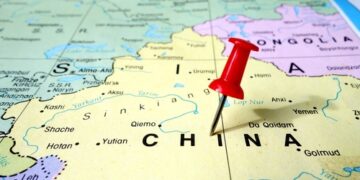During a recent webinar by the Clean Arctic Alliance, the NGO discussed the implications of the priorities for IMO member states regarding the curbing of black carbon emissions and scrubber wastewater discharges on the Arctic, the climate and the world’s oceans.
In March 2022, temperatures in the Arctic were recorded at 30 degrees Celsius above normal levels for the time of year, making changes to address a heating Arctic climate necessary. A recent webinar by the Clean Arctic Alliance shed light on this matter and provided suggestions to decarbonize the Arctic.
Beginning the webinar, Eelco Leemans, Clean Arctic Alliance, Technical Advisor, explained that “An important submission comes from the International Council for the Exploration of the Sea (ICES), which says that until the transition to the use of cleaner low-sulphur fuels, discharge of scrubber water to marine environment should be avoided.”
As he said, in addition to this submission, the NGOs FOEI, WWF, Pacific Environment and CSC, recommended the following:
- Complete prohibition of scrubbers.
- Robust risk and impact assessment guidelines to support local and regional measures to restrict wastewater discharges.
- Consider conflicts between scrubber regulations and international legal instruments.
On the same wavelength, Bill Hemmings, Clean Arctic Alliance, Technical Advisor, stated that:
Key to reducing soot in diesel fuels is improving the fuel quality
As he explained, for road fuels, a drastic reduction in the sulphur content was mandated in both Europe and North America to enable exhaust filters to be fitted, as too much sulphur induced particulate matter clogs the filters.
As far as aviation is concerned, recent reports show that soot can be removed almost completely from aviation kerosene.
In fact the sulphur disappears first and that is for free because the higher energy content of the cleaner fuel means the burning of less fuel and less pay
Talking about shipping, Mr. Hemmings noted that the most obvious first move is to switch to distillate fuels. “These fuels are cleaner already and widely in use.”
In fact MEPC 77 called for such a switch to be voluntary, with the co-sponsors of the resolution making clear that such a change can cuts soot by 50-80%. For this reason, Mr. Hemming highlighted that “PPR should now turn this resolution into a mandatory regulation.”
However, apart from the switching to distillates, another solution for shipping could be to reduce the aromatics in the fuel. Nonetheless, despite this being a solution, Mr. Hemmings said that:
Doing so will require changes in refinery processes to apply more hydrogen. That is an additional cost and leads to a refinery CO2 penalty. PPR’s task must be to examine all these issues and find the right balance between reducing the aromatics, the incremental cost and engine performance
Considering this solution, Mr. Hemming suggested the following in order to cut soot in fuels:
- The aromatics should be reduced, and/or;
- The hydrogen to carbon ratio must be improved.
In fact, this is a proposal that Germany and Finland have already suggested, with several NGOs support it for further consideration during PPR9.
However, Clean Arctic Alliance’s Technical Advisor warned that a concerning issue is the fact that engine root standards failed for aviation, with Mr. Hemmings proposing the cutting of aromatics in marine fuels, and switching to distillates in the Arctic.
What is more, during IMO’s Pollution Prevention and Response sub-committee, NGOs called for the IMO to slash the impact of black carbon emissions on the Arctic by developing a mandatory regulation requiring a switch to distillate or alternative cleaner fuels or methods of propulsion for vessels operating in or near Arctic water.
At PPR 9, IMO member states must agree on ambitious and urgent global action to dramatically reduce ship-source black carbon emissions this decade, in order to mitigate the climate crisis in the Arctic
said Dr Sian Prior, Lead Advisor to the Clean Arctic Alliance.
More specifically, the NGO community submitted a paper to PPR 9 prioritizing control measures to reduce Black Carbon emissions impacting the Arctic. “The IMO’s black carbon resolution strongly encourages governments to start addressing the threat to the Arctic from black carbon emissions, and provides a pathway for regional or national action’’, added Prior.

































































